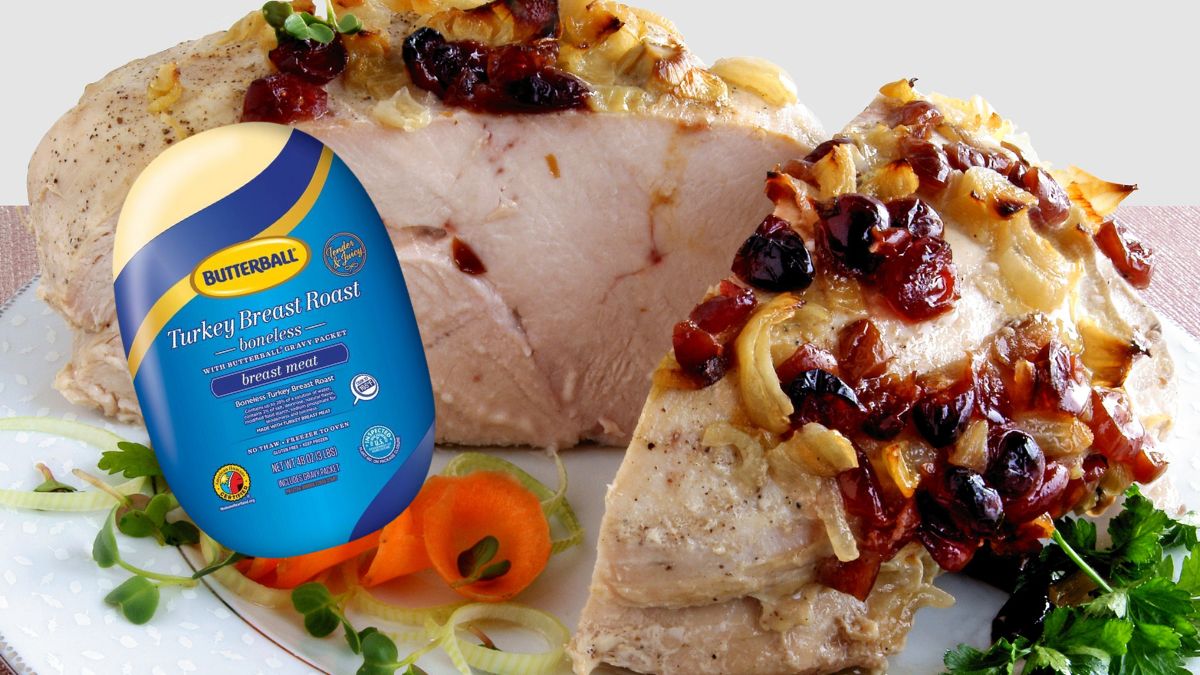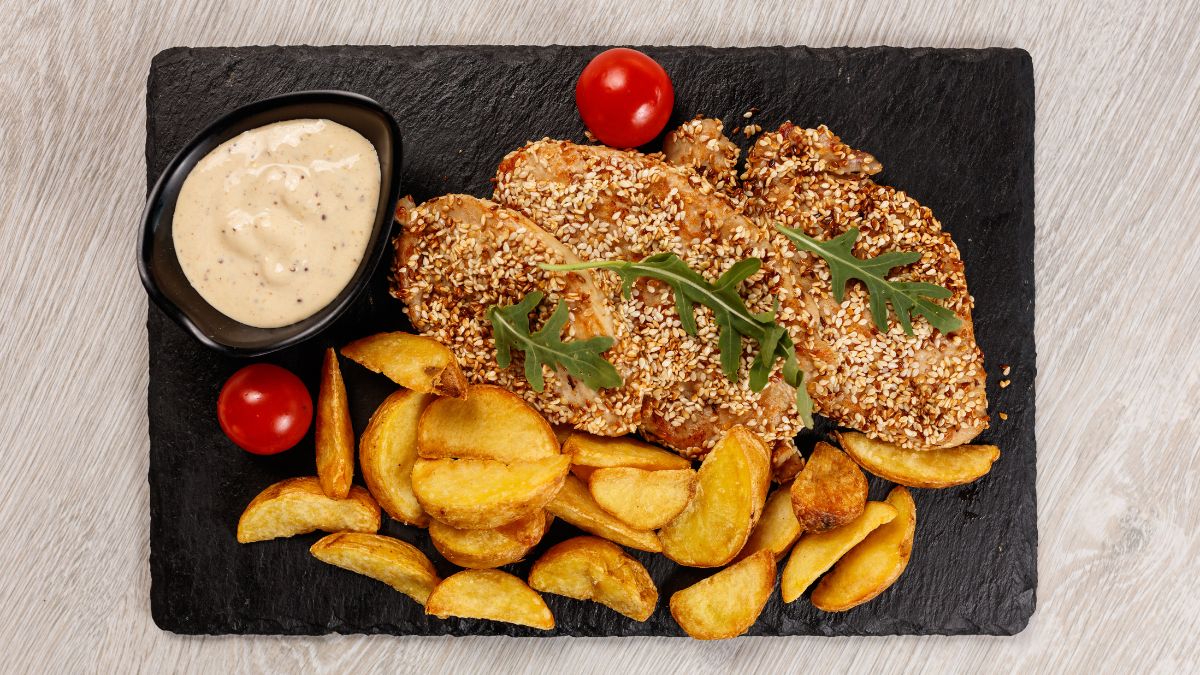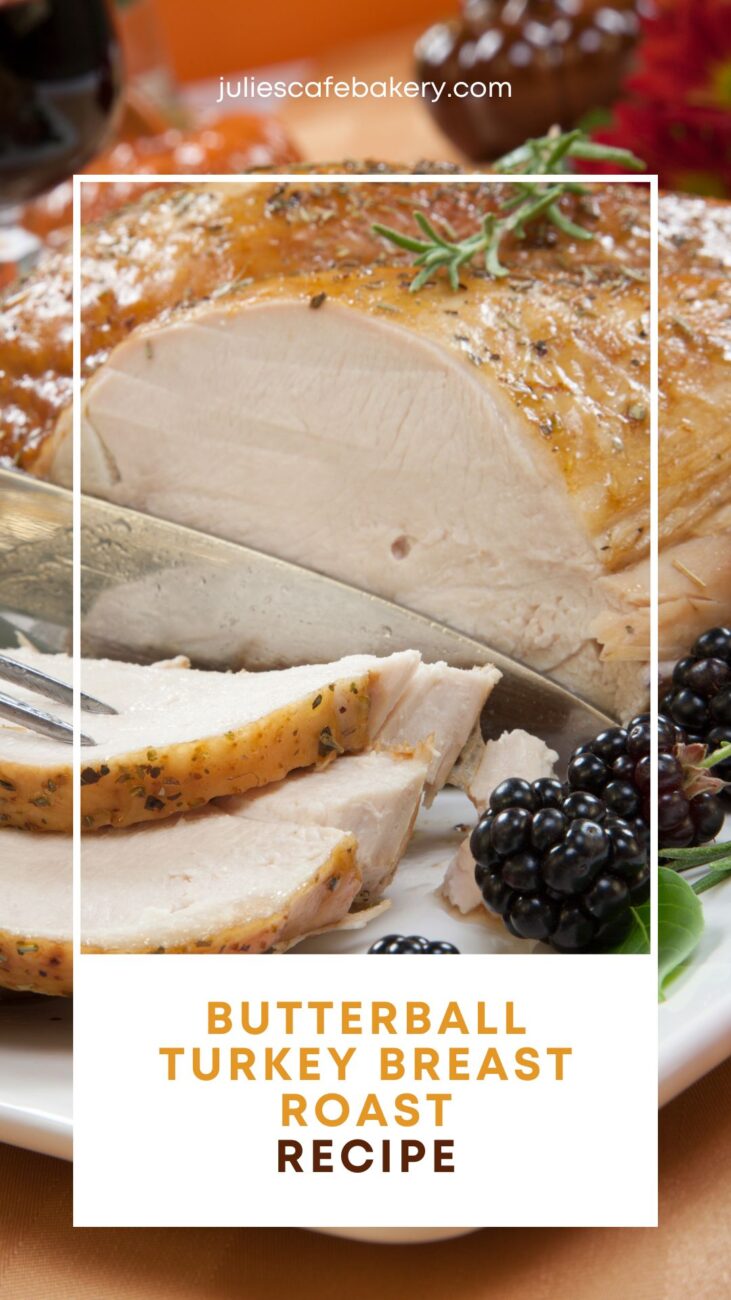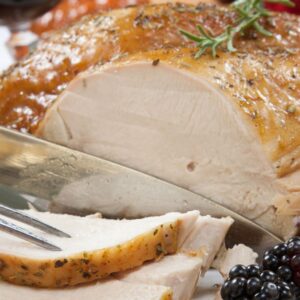How to Cook Butterball Turkey Breast Roast? [+ Serving Ideas]

I always look forward to cooking perfectly roasted Butterball Turkey Breast Roast for friends and family. There’s nothing quite like the aroma of a turkey roasting in the oven to make a house feel like home. The best part is enjoying the leftovers for days after! Over the years, I’ve developed a foolproof method for roasting a turkey breast that results in tender and juicy meat you’ll wish you had cooked more of.
In this step-by-step guide, I’ll share how to select the right turkey breast, prep it for roasting, and cook it perfectly. I’ll also provide some of my favorite side dish pairings and tips for storing leftovers. Let’s get started!
Butterball Turkey Breast Roast Cooking Instructions
Nothing beats the comfort of a home-cooked turkey dinner. Follow these simple steps, and you’ll be enjoying juicy, flavorful meat in no time!
Step 1: Preheat the Oven and Prep the Turkey Breast
To get started, preheat your oven to 350 °F (180 °C). While the oven is heating up, take the turkey breast out of the fridge and pat it dry with paper towels.
Next, place the turkey breast on a rack in a roasting pan and season all over with salt and pepper. I also like to rub it with olive oil and fresh or dried herbs like rosemary. The oil will help the seasonings stick and add more flavor.
I like to place aromatic vegetables and herbs in the roasting pan to ensure my turkey breast roast turns out moist and flavorful. The vegetables release moisture as they cook, and the herbs infuse the meat with flavor.
Step 2: Roasting the Turkey Breast
Before putting your Butterball Turkey Breast in the oven, you can also create a flavorful butter or oil to rub under the loosened skin. Mix softened butter with minced garlic and herbs, or use olive oil. Gently slide your fingers under the skin again to rub the mixture onto the meat.
Prick a few holes in the skin with a fork to allow fat to render and steam to escape. This helps the skin get nicely crispy.
Once the oven is preheated, put the turkey breast in and roast until the thickest part reaches 165 °F (75 °C). For a 3 to 4-pound breast, this usually takes 1 1⁄2 to 2 hours.
I recommend checking on the turkey after about an hour and a half to see how the browning is progressing. If it’s browning too quickly, tent the breast with foil.
Step 3: Let the Turkey Breast Rest
When the turkey breast comes out of the oven, tent it loosely with foil and let it sit for 20-30 minutes before slicing and serving.
This resting period allows the juices to redistribute throughout the meat, making the turkey breast extra juicy and tender. If you slice into it too soon, the juices will run out, and the meat can become dry.
While the turkey is resting, use this time to make the gravy, finish any side dishes, and set the table.
The internal temperature will continue to rise 5-10 degrees during resting due to carryover cooking. The final temperature should be around 165 °F (75 °C).
Once rested, uncover the turkey breast and use a sharp knife or electric knife to slice and serve carefully. Enjoy your perfectly roasted, mouthwatering turkey breast!
What to Serve With Turkey Breast Roast?

A classic turkey breast dinner isn’t complete without side dishes like stuffing, mashed potatoes, cranberry sauce, green beans, rolls, and gravy. A fresh salad provides balance and lighter fare. With these accompaniments, your roasted turkey breast will be the star of a memorable meal.
Creamy mashed potatoes are a must for me. I like to add butter, sour cream, chives, and garlic to boost the flavor. Then, homemade stuffing with celery, onions, herbs, and bread cubes is always a hit. For extra flavor, add sausage, mushrooms, or chestnuts.
Simple steamed green beans with almonds or green bean casserole are the perfect sides for turkey, or, if you are more into sauces, the tangy sweetness of cranberry sauce complements the savory turkey. Homemade or canned, either works great.
Lastly, you cannot go wrong with some veggies. Roasted Brussels sprouts, glazed carrots, creamed corn, or roasted squash are all great options.

How to Store Leftovers?
After enjoying your perfectly roasted turkey breast, you’ll likely have leftovers to store. Here are some tips to keep in mind:
- Allow the turkey to cool completely, then refrigerate within 2 hours of cooking. This prevents the growth of harmful bacteria.
- Store leftovers in shallow containers or ziplock bags. This allows for quick cooling and reheating. I like to portion the leftovers into meal-sized amounts so they’re ready to grab and go.
- Use leftovers within 3 to 4 days. Turkey leftovers will last up to 4 days in the refrigerator. Be sure to check that the turkey still smells fresh before eating — if there’s an off odor or color, it’s best to discard it.
- Don’t forget the leftovers in the back of the fridge! Label and date the containers so you remember to eat the leftovers before they go bad.
- For longer-term storage, you can freeze leftovers. Turkey leftovers will last up to 3 months in the freezer. Simply reheat thoroughly until the internal temperature reaches 165 °F (75 °C).
- Get creative with leftovers! Turkey leftovers are great in soups, stews, pot pies, sandwiches, and wraps. Add extras like cranberry sauce, stuffing, veggies, and gravy for a complete leftover turkey dinner.
Using these tips will ensure you safely enjoy your turkey leftovers for meals to come.
How do you like this Butterball Turkey Breast roast recipe? Let me know in the comment below!

Butterball Turkey Breast Roast
Ingredients
- 1 pack Butterball Turkey Breast Roast
- 1 tbsp Olive Oil
- ½ tsp Dried Rosemary
- ½ tsp Dried Thyme
- ¼ tsp Paprika
- Salt and Pepper to Taste
Instructions
- First, preheat your oven to 350 °F (180 °C). While the oven is heating up, take the turkey breast out of the fridge and pat it dry with paper towels.
- Then, mix the seasoning with the olive oil, place the turkey breast on a rack in a roasting pan, and rub the seasoning mix all over.
- Prick a few holes in the skin with a fork to allow fat to render and steam to escape. This helps the skin get nicely crispy.
- Once the oven is preheated, put the turkey breast in and roast until the thickest part reaches 165 °F (75 °C). For a 3- to 4-pound breast, this usually takes 1 1⁄2 to 2 hours.
- Check on the turkey after about an hour and a half to see how the browning is progressing. If it’s browning too quickly, tent the breast with foil.
- When the turkey breast comes out of the oven, tent it loosely with foil and let it sit for 20-30 minutes before slicing and serving.
- Serve your turkey breast with some of the sides on the list, and enjoy!
Nutrition
Before diving into the nutritional details, please review our Nutritional Disclaimer page for important context and clarifications.
